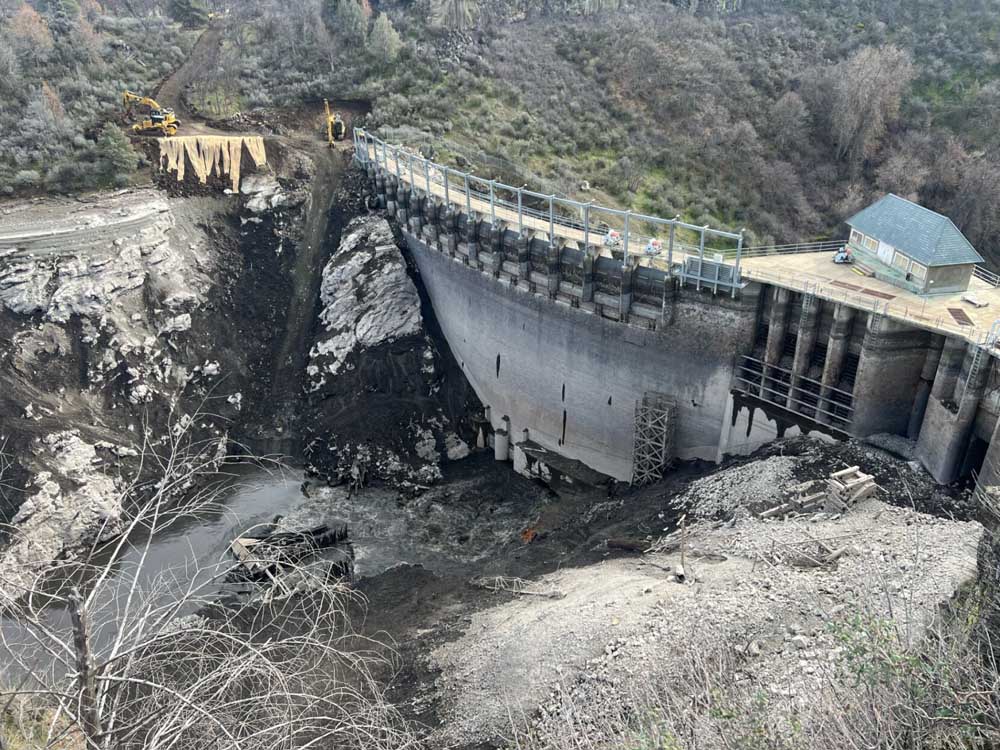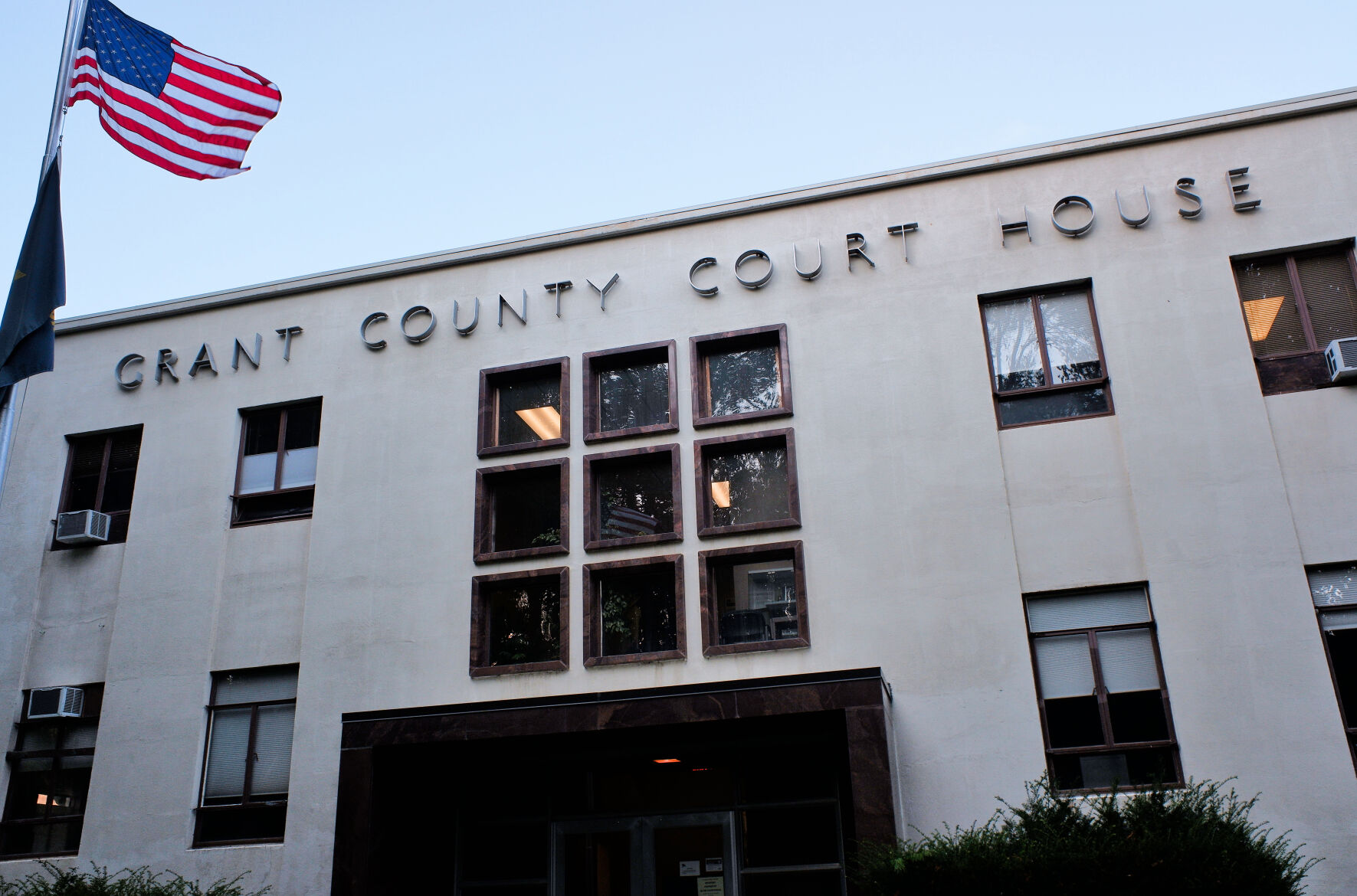Demolition of the largest Klamath River dams underway
Published 3:00 pm Friday, March 15, 2024

- The backside of Copco Dam No. 1 reveals the water drawdown and layers of concrete that will have to be removed.
HORNBROOK, Calif. — Following a test blast on Friday, March 8, the Klamath River Renewal Corp. will proceed with the removal of the Copco No. 1 Dam, the second and largest dam to be removed as a part of the Klamath dam removal project.
The Copco No. 1 Dam, constructed in 1918 for the sole purpose of hydroelectric power generation, has blocked fish passage for more than 100 years and is expected to be fully removed by the end of August.
“We are excited to get to work,” Mark Bransom, CEO of the Klamath River Renewal Corp., said in a press release. “With the initial phase of drawdown complete, the dam is fully exposed and can safely be disassembled.”
Copco 1 is by far the largest of the dams on the project that stretches across Northern California and Southern Oregon. It towers 125 from the riverbed. The spillway is about 118 feet long. There is also 126 feet of concrete in the ground, underneath the riverbed, Bransom told The Bulletin.
“Back in 1918, they had a batch plant nearby and had to pour a base for the dam in the fractured, porous basalt rock. It goes down 126 feet,” Bransom said. Plans are to remove about 15 feet of concrete below the riverbed so the river will cover it, even in low flows.
Kiewett Infrastructure West is the main contractor on the site, employing up to 200 workers. Another 200 are working on riverbed remediation, seeding native plants along the riverbanks.
According to the Klamath River Renewal Corp., the entire project involves demolishing 100,000 cubic yards of concrete and 2,000 tons of steel. Total cost is estimated at $450 million, including $200 million from PacifiCorp ratepayers and $250 million from a statewide water bond approved by California voters in 2014.
The project is not without critics who say that toxic algae built up behind the dam walls have caused massive fish kills of nonnative fish once the water was released.
“You don’t undo a century’s worth of environmental impacts overnight,” Bransom said. “The river will come back, but it will be a slow recovery.”
Copco No. 2, a diversion dam that was located just downstream of Copco No. 1, was removed last year. The remaining three dams — Copco No. 1, Iron Gate, and JC Boyle — have been breached to drain the reservoirs behind them. Drawdown of the reservoirs needed to be done before removal could begin.
Copco 1 created Copco Lake east of Yreka in Northern California. The name “Copco” is an acronym referring to the California Oregon Power Co., which merged with what is now PacifiCorp in 1961.
Demolition of the Copco No.1 Dam, which will be performed through a repetitive cycle of drilling, blasting, and chipping, can begin before the spring runoff period has concluded because it is a concrete arch dam.
So, should the Klamath River flood significantly this spring, water could safely pass over the partially removed concrete dam and the dam would remain securely in place. The Copco No. 1 Dam removal plan was specifically designed to allow for this safe passage of flowing water, should it occur, Bransom said.
The removal of Copco No. 1, Iron Gate, and JC Boyle Dams is expected to be complete sometime this fall, in time for the fall run of chinook salmon, he said. The restoration of the former reservoir footprints is currently underway and will continue for several years until vegetation is successfully established and water clarity has returned to baseline conditions.






